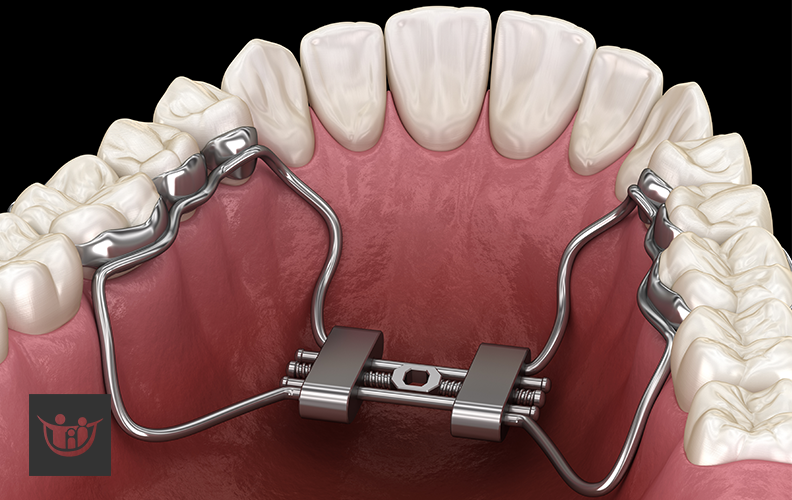Bronxville, NY – A palatal expander is a device that creates more room in the mouth by working to widen the upper palate. That may sound a little bit scary, but palatal expanders are a very commonly used appliance and can provide your child with their perfect smile.
“We recommend the use of palatal expanders for a few different reasons,” says Dr. Polan. “These can include when there is a very severe crossbite or if there isn’t enough room in the upper palate for the permanent teeth to erupt properly. In these instances, a palatal expander can be an ideal solution to correct the issue and provide the room needed.”
How does a palatal expander work?
The expander does exactly what its name implies – it expands the upper palate. It can be used in younger patients whose bone sutures in the palate have not yet fully fused.
We custom-make each palatal expander for the individual patient. This ensures an ideal fit. It is bonded to the upper molar teeth and is connected in the middle by a screw. This screw is activated by turning a key. Over time, this activation shifts the bones in the roof of the mouth. Once desired expansion has been reached, the expander stays in place until the bone can stabilize. This will usually take a few months.
What should you and your child expect when the expander is placed?
Your child may need a few days to get used to the expander. It will feel weird in their mouth, and talking and eating can feel strange in the beginning. Your mouth will produce extra saliva as it gets used to the expander and you may notice a slight lisp as your tongue gets used to the expander, as well.
You may notice a small gap appear between the front teeth. This is normal and will be corrected once your child’s braces are placed.
The expander is working to move bone which can cause some discomfort for your child. Over-the-counter pain relievers can be used to help.
Your child will need to pay close attention to their oral hygiene while the palatal expander is in place. Rinsing well with water or using a syringe filled with water can remove any food debris that may get stuck in the expander. Your child should also take care to avoid all the foods on the list of foods to avoid while in braces – anything too hard, sticky, chewy, or crunchy could damage the appliance.
Palatal expanders can ensure an ideal result when orthodontic treatment is completed in patients whose jaws are still growing. Orthodontic treatment can occur at any age, but palatal expansion without the need for surgery is best in children under the age of 13.
It is recommended that children have their first orthodontic consultation around the age of seven. Most children won’t need treatment that young, but starting a relationship with an orthodontist at this age ensures that when treatment is indicated, it can begin at the time it will have the most impact.
If your child is around the age of seven or older and hasn’t yet had an orthodontic consultation, schedule one today with Dr. Polan by calling 914-654-1859.


No Comments